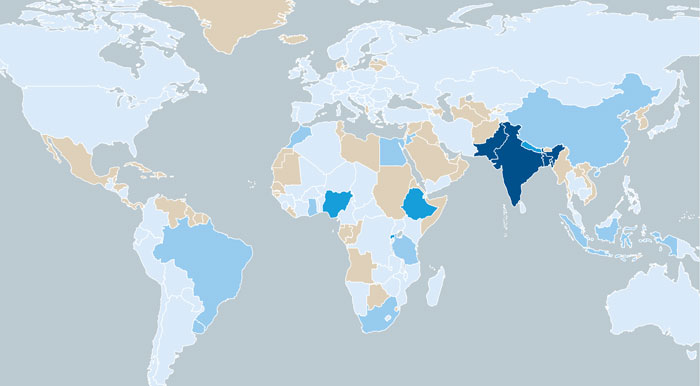 Despite the tremendous and continuing efforts associated with UN peacekeeping operations, the full range of available data on uniformed contributions to UN peacekeeping has not been readily available to researchers, limiting the use of quantitative methods on questions related to UN peacekeeping. The new IPI Peacekeeping Database, developed by the International Peace Institute, fills this gap.
Despite the tremendous and continuing efforts associated with UN peacekeeping operations, the full range of available data on uniformed contributions to UN peacekeeping has not been readily available to researchers, limiting the use of quantitative methods on questions related to UN peacekeeping. The new IPI Peacekeeping Database, developed by the International Peace Institute, fills this gap.
Drawing from UN archival records, the database presents the first publicly available database of total uniformed personnel contributions of each contributing country by month, by type (troop, police, or expert/observer) and by mission, from November 1990 to the present.
You can find the database files for download here.
This report introduces the database, identifies key trends in contributions to UN peacekeeping over the past two decades, and suggests opportunities for further research using this online dataset.
Presenting their initial findings from the data, the authors explore regional and subregional trends and countries’ contribution rationales, such as whether aspiration for a permanent Security Council seat influences patterns of contributions. They also demonstrate both a broadening and narrowing of the “base” of troop- and police-contributing countries.
This is the third paper in IPI’s Providing for Peacekeeping series, which is coordinated in partnership with Griffith University and the Elliott School of International Affairs at George Washington University. The first report was “Broadening the Base of United Nations Troop-and Police-Contributing Countries” and the second was “Rethinking Force Generation: Filling Capability Gaps in UN Peacekeeping.”
About the authors:
Chris Perry is a Senior Policy Analyst at the International Peace Institute.
Adam Smith is a Research Fellow and Manager of the Peace Operations Program at the International Peace Institute.







